What is a digital product marketplace?
Is a digital product marketplace profitable?
Benefits of a digital product marketplace
Challenges of a digital product marketplace
Examples of digital product marketplaces
How does a digital marketplace platform work?
The most popular business models in digital product marketplaces
How does a digital goods marketplace make money?
Understanding your marketplace idea
Choosing the right Sharetribe plan
A step-by-step guide to creating a marketplace using Sharetribe
The digital era has transformed the way commerce works, and online marketplaces have gained momentum in the global economy. Recent projections indicate that online marketplaces are set to reach a total GMV of $3.832 trillion by the end of 2024, a figure that has more than doubled from $2.670 trillion in 2020. This phenomenal growth is marked by a year-over-year increase of 10% projected for 2024, compared to 8.2% in 2023 and an astonishing 29.5% in 2020, and it underlines the immense potential of these platforms.
Among the available tools for online marketplace creation, Sharetribe is one of the most user-friendly options that enable entrepreneurs to build a custom platform without requiring any coding expertise. Be it a digital products marketplace, such as ebooks, software, or courses, Sharetribe has all the essential tools to get your idea up and running.
This article will help you with the critical steps to building a successful marketplace for digital products using Sharetribe, all the way from defining your niche to launching your platform.
What is a digital product marketplace?
A digital product marketplace is an online platform where users can purchase and sell digital goods, including but not limited to software, e-books, music, videos, courses, and many more. Unlike traditional physical product marketplaces, website for selling digital products facilitate the exchange of intangible products that can be downloaded, streamed, or accessed electronically. These platforms act as intermediaries, enabling sellers to reach a broad audience while providing buyers with a variety of digital offerings in one place.

Is a digital product marketplace profitable?
Yes, e-commerce websites for digital products can be highly profitable. They typically have lower overhead costs compared to physical product marketplaces, as they do not require inventory storage or shipping logistics. Additionally, a digital product wholesale has the advantage of scalability – once a product is created, it can be sold an unlimited number of times without additional production costs. Profit margins can be substantial, especially if the marketplace attracts a large volume of users and offers a diverse range of in-demand digital products.
Of course, though, profitability does depend on any platform fees, marketing that might come about, and overall quality or demand for the products provided. A well-implemented digital products business with active user participation can amass notable profits by the use of commissions, subscription models, or paid-for seller listing features.
Benefits of a digital product marketplace
- Scalability: Online marketplace digital products can be sold repeatedly without the need for physical inventory, making it easier to scale your marketplace as demand grows.
- Global reach: Unlike physical products, digital goods can be sold to anyone, anywhere in the world, opening up opportunities for international expansion.
- Low overhead: With no physical inventory or shipping required, the operational costs are relatively low. This allows for higher profit margins.
- Diverse revenue models: Digital download marketplace can adopt various revenue models such as commission-based fees, subscription services, or premium listings for sellers.
- Quick delivery: Digital products can be delivered instantly, enhancing the user experience and making transactions more efficient.
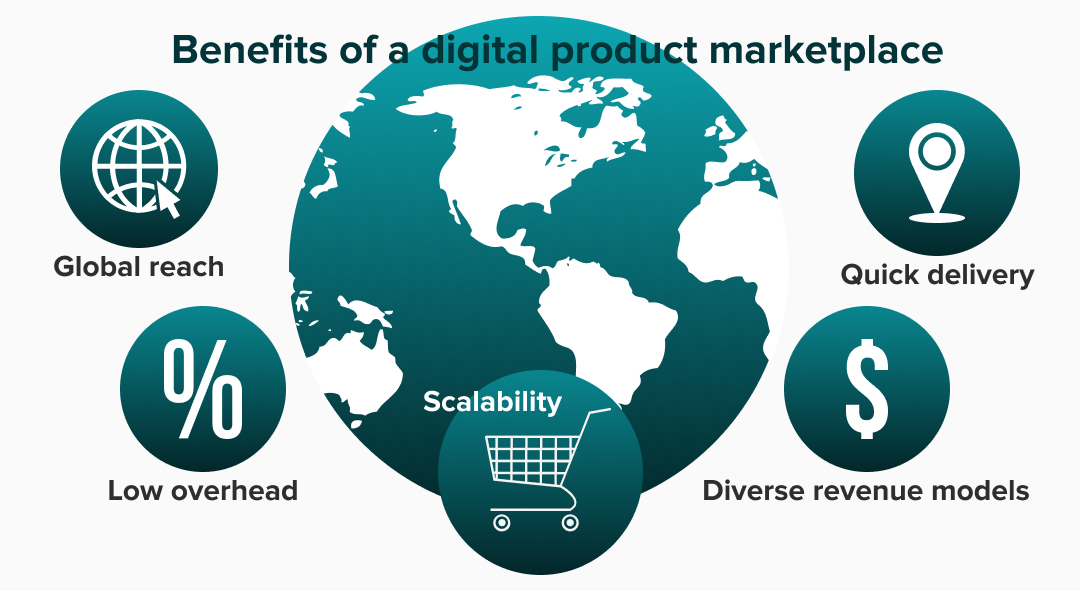
Challenges of a digital product marketplace
- Competition: The digital products industry is highly competitive, with numerous established players already offering a wide range of digital products. Differentiating your marketplace and attracting both sellers and buyers can be challenging.
- Copyright and intellectual property issues: Since digital products are often easily replicable, ensuring that content is protected from piracy or unauthorized distribution is a critical challenge for marketplace operators.
- Quality control: Ensuring that digital products meet a certain standard and do not infringe on intellectual property rights requires constant monitoring and quality assurance measures.
- Platform security: Protecting both buyer and seller data, along with secure payment processing, is vital to maintaining trust on the platform.
- Marketing and user acquisition: Building a large, active user base requires significant investment in marketing and outreach to ensure that both sellers and buyers are drawn to the e-commerce platform for digital products.

Examples of digital product marketplaces
Gumroad
Gumroad is the go-to option for many creators when it comes to selling to a very wide variety of consumers in digital products. For their ease and simplicity, the platforms are quite ideal for facilitating the sale of e-books, music, and software, among other types of digital goods. Moreover, pre-orders and audience management features make this place highly effective for marketing purposes as well.
Etsy
While Etsy is all about handmade and vintage items, it does support the selling of digital downloads. It means artists and creators can sell their digital products, for instance, printable art, design templates, or downloadable patterns. It’s community-oriented and works on the principle of interaction and interrelationship between buyers and sellers.
Amazon
One of the best website platforms to sell digital products globally, Amazon enables sellers to offer a wide range of digital products. Kindle Direct Publishing allows authors to publish e-books, while Amazon Web Services (AWS) supports software sales and digital solutions. Amazon’s vast reach and reliable payment systems make it an appealing choice for digital product sellers.
eBay
A veteran in the online marketplace industry, eBay supports digital product sales through auctions or fixed-price listings. One could sell software, e-books, and other downloadable products. It ensures buyers and sellers with secure transaction processes, maintaining eBay as a trusted environment.
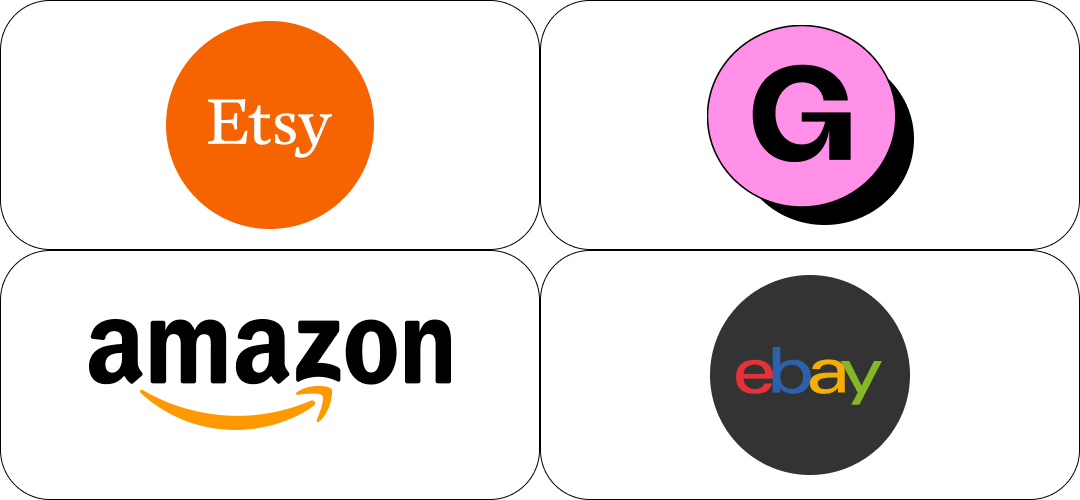
How does a digital marketplace platform work?
A website to sell digital products works by facilitating transactions between buyers and sellers, providing a secure and seamless user experience. Key features typically include:
- Seller registration: Sellers can register and create their online stores within the marketplace, listing their digital products for sale.
- Product listings: Sellers upload their digital products, including details like descriptions, pricing, and download options.
- Payment processing: The platform handles payments securely, often integrating with third-party payment gateways like Stripe or PayPal.
- Product delivery: Once a transaction is complete, the platform ensures that buyers can easily download the purchased digital products.
- Ratings and reviews: A marketplace often includes customer feedback features, allowing buyers to rate products and sellers, which helps build trust within the community.
- Admin dashboard: Admins can manage the entire marketplace, including monitoring transactions, managing disputes, and tracking user activity.
Sharetribe’s platform offers all of these features and more, with an open-source version for developers and a hosted version for those who prefer an easier setup. It allows you to build digital product marketplace and customize it to suit your needs, whether you’re building a platform for software, art, or educational content.
The most popular business models in digital product marketplaces
The business model of your multi vendor marketplace for digital products will determine how you generate revenue and support the platform’s sustainability. Some popular business models include:
- Commission-based model: In this model, the marketplace charges a percentage fee on every transaction made by sellers. This is a common structure for platforms like Etsy, Gumroad, and Amazon.
- Subscription model: A subscription-based marketplace charges sellers a monthly or annual fee to list their products. This can work well for marketplaces that host a large number of sellers and offer premium services, such as additional marketing or promotional tools.
- Freemium model: A freemium model offers basic marketplace services for free, while charging for advanced features. This could include premium product placement, additional storage, or analytics tools for sellers.
- Listing fees: In this model, sellers pay a fee each time they list a product on the marketplace. This is often seen in platforms like eBay.
- Membership fees: A multivendor digital products marketplace might also charge buyers or sellers a membership fee to access certain features or exclusive content. For example, platforms like Patreon operate on a membership model where creators offer premium content to subscribers.
- Advertising revenue: Some marketplaces allow sellers to advertise their products on the platform, generating additional revenue. This can be in the form of sponsored listings or ads placed throughout the marketplace.

How does a digital goods marketplace make money?
A digital marketplace strategy in earning money consists of generating revenue through various monetization strategies, depending on the platform’s business model and target audience. One of the most prevalent revenue models is charging a commission on each transaction. Marketplaces typically take a percentage of the sale price for every digital product sold. This percentage can vary depending on the platform’s policies. For example, platforms like Gumroad or Etsy charge a fee for each sale made, which helps maintain the marketplace’s operations, including transaction processing and customer support.
Some digital product marketplaces charge sellers a subscription fee to list their products. This can be a monthly or annual fee and can also include additional features like increased product visibility, access to advanced analytics, or enhanced seller tools. Subscription-based models are seen in platforms like Etsy, where premium plans offer various perks for sellers to optimize their store’s performance.
Another common revenue model is charging sellers a fee each time they list a new digital product on the marketplace. eBay, for instance, charges sellers a listing fee when they post new products for sale, helping the platform cover the costs associated with maintaining product listings and keeping the platform up to date. If you’re looking to create a website for digital products, incorporating a similar fee structure could be a practical way to ensure sustainability.
Advertising and sponsored listings
Many digital marketplaces allow sellers to promote their products through ads or sponsored listings. This could include paying for better placement on the platform or appearing in search results. For those exploring how to create a website to sell digital products, offering advertising options can be a lucrative way to support sellers and generate additional revenue for the platform.
Membership programs
Some marketplaces offer membership programs where sellers or buyers can pay for premium access. For example, a marketplace could offer a premium subscription that provides sellers with enhanced store features or buyers with exclusive content, such as access to special discounts or early product releases. This approach is also applicable if you plan to create a digital products marketplace online, ensuring value for both sellers and buyers.
Payment processing fees
Marketplaces often integrate with third-party payment processors like PayPal or Stripe, which charge a fee per transaction. While the marketplace itself may not directly profit from this, it can use these fees as part of its cost structure. In some cases, the marketplace may include processing fees as an additional cost for the buyer or seller. Understanding this dynamic is crucial when considering the best marketplace to sell digital products online, as payment processing is a key aspect of a seamless user experience.
Licensing and affiliate agreements
In certain cases, digital product marketplaces may enter into licensing or affiliate agreements to promote third-party digital products. These affiliate links can lead to additional revenue when users purchase products through referral links.
By combining one or more of these monetization strategies, a marketplace for selling digital products can build a sustainable business model that supports both the platform’s growth and its creators.
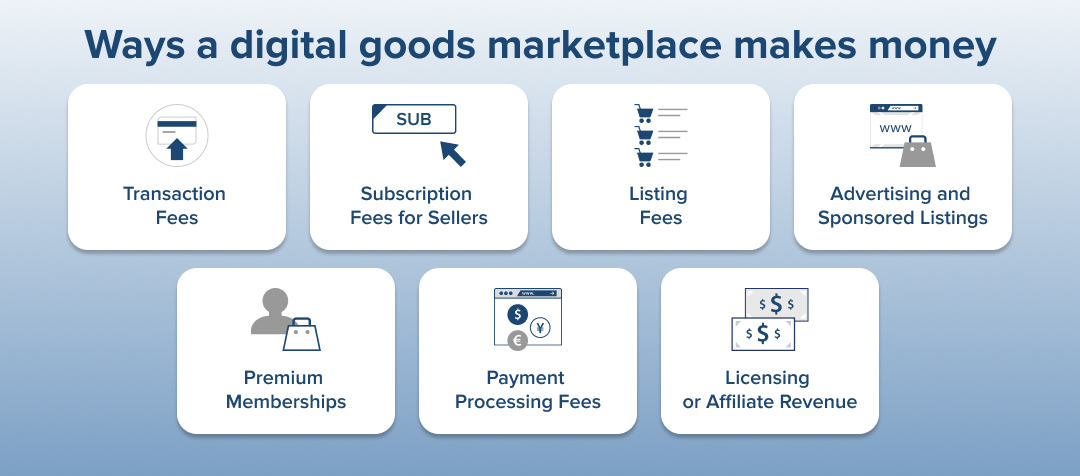
Understanding your marketplace idea
Define your niche
The foundation of any successful digital goods marketplace lies in a well-defined niche. Start by asking yourself:
- What specific type of digital products will your marketplace focus on? For example, will you cater to software solutions, stock photos, templates, ebooks, or online courses?
- What are the unique selling propositions (USPs) of your digital content marketplace? Identify features or services that will set your platform apart from competitors, such as seamless integrations, exclusive content, or competitive pricing.
Identify your target audience
Understanding your audience is crucial for tailoring your platform’s features and marketing strategy. Consider the following:
- Who are your ideal buyers and sellers? For instance, are you targeting freelance creators, small businesses, or tech enthusiasts?
- What are their specific needs, preferences, and pain points? Knowing this will help you design a marketplace for digital goods that resonates with your audience.
Competitive analysis
To position the marketplaces to sell digital products effectively, conduct a thorough analysis of existing platforms in your niche:
- Research established competitors. Examine their product offerings, customer base, and user experience.
- Analyze their strengths and weaknesses. What are they doing well, and where are they falling short?
- Identify opportunities to differentiate your marketplace. Look for gaps in the market that you can fill, whether through pricing, functionality, or specialized services.
By thoroughly understanding your digital marketplace platform idea, audience, and competition, you’ll lay a strong foundation for building a thriving platform using Sharetribe.
Choosing the right Sharetribe plan
Sharetribe offers a variety of pricing tiers to suit different needs and budgets. Here’s an overview of their plans:
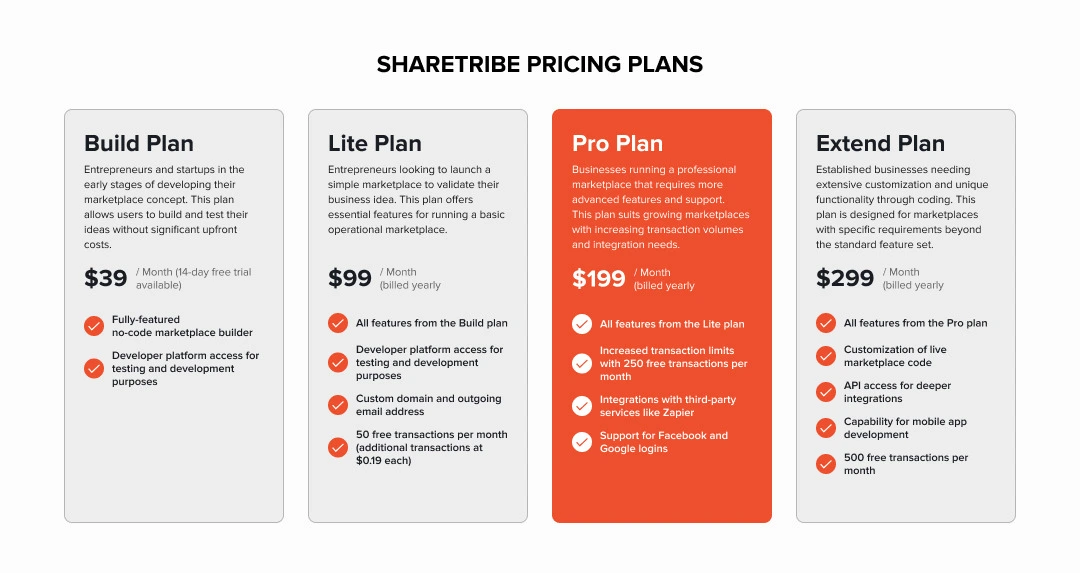
Consider your budget and scalability needs
When choosing a Sharetribe plan, evaluate your current requirements and future growth potential:
- Build plan: Ideal for entrepreneurs who want to prototype their marketplace or test its functionality without committing to a live launch.
- Lite plan: Suitable for small-scale marketplaces ready to go live with basic features and minimal costs.
- Pro plan: A good choice for growing marketplaces that need a custom domain, third-party integrations, and enhanced user authentication options.
- Extend plan: Best for established platforms requiring advanced customization, mobile app development, and a higher transaction limit.
A step-by-step guide to creating a marketplace using Sharetribe
First of all, you need to know that Sharetribe offers a free trial to help you get started:
- Sign up: Head over to the Sharetribe website and click on “Start free trial.”
- Complete setup wizard: Follow the setup wizard by providing details about your marketplace idea. Sharetribe will use this information to generate a basic version of your marketplace website, providing you with a starting point to work from.
Step 1: Customize your marketplace
After setting up your account, you will gain access to the Sharetribe Console, the admin interface where you can manage and customize your marketplace. Key customizations include:
- Design: Choose a theme and layout that aligns with your brand identity. Sharetribe offers a variety of templates to create a professional look and feel.
- Categories: Organize your products into categories and subcategories. This makes it easier for users to navigate and find products.
- User profiles: Allow users to create profiles and manage their listings easily. This feature is crucial for creating a community-based marketplace, where sellers can manage their inventory, product details, and orders.
- Information pages: Admins should fill out all essential information pages, such as “About,” “Terms of Service,” and “Privacy Policy.” These pages provide users with the necessary information and help establish trust.
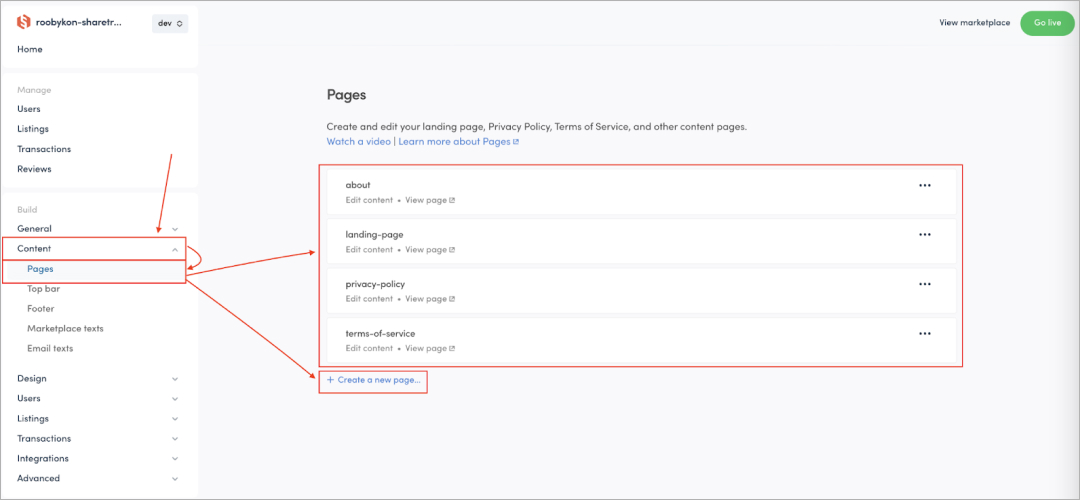
Once these pages are created, add links to them in the footer to ensure users can easily access this information from any page on your marketplace.
Step 2: Set up listings and inventory management
- Seller listings: Configure the system so that sellers can easily add their products to the marketplace. Provide clear guidelines on listing details such as product descriptions, images, and prices.
- Inventory management: Enable inventory management features so that sellers can track stock levels and update their listings in real-time. This is crucial for maintaining an efficient and well-organized marketplace.
Step 3: Integrate payment systems
For your marketplace to be functional and profitable, you need a secure way to handle payments. Sharetribe integrates with services like Stripe to facilitate secure transactions.
- Payment setup: Set up payment processing through Stripe or other services that Sharetribe supports. This allows users to make purchases and sellers to receive payments securely. If you’re new to Stripe, check out Roobykon’s article “Quick and Easy Steps to Open a Stripe Account for Your Business” for a straightforward guide on getting started with Stripe and ensuring smooth payment transactions for your marketplace.
- Subscription plans: Choose a subscription plan based on your marketplace’s needs. Sharetribe offers different plans, such as Lite for basic features or Pro for advanced functionalities, including custom domains and additional integrations.
Step 4: Launch your marketplace
- Create a live version: Use the Sharetribe Console to transition your marketplace from a test environment to a live platform.
- Early adopters: Start by inviting a small group of early adopters to join the platform. Gather feedback from these users to refine your marketplace before a wider launch.
Before launching your marketplace, you can set up a pre-launch onboarding mode to prepare for a smoother launch. Learn how to do this by following this instruction guide.
Step 5: Marketing and growth strategies
Once your marketplace is live, it’s time to focus on growth and attracting users:
- Onboard sellers: Encourage sellers to list their products by offering incentives or highlighting the potential reach of your platform.
- Promote your marketplace: Leverage social media, online ads, and influencer partnerships to raise awareness about your platform. Engage with relevant communities to build excitement.
- Iterate based on feedback: Continuously improve your platform by incorporating feedback from both buyers and sellers. Regular updates will enhance the user experience and keep your marketplace competitive.
Additional features to enhance your marketplace
Sharetribe provides several built-in features that can help make your marketplace more robust and user-friendly:
- Messaging system: Buyers and sellers can easily communicate within the platform, enhancing the transaction experience and fostering trust.
- Reviews: A review system allows buyers to rate sellers and their products, helping build credibility and trust in your marketplace.
- Custom code options: For more advanced or unique features beyond Sharetribe’s built-in functionalities, you can use custom code to extend the capabilities of your marketplace.
Tips for marketplace success
Building your digital marketplace with Sharetribe is just the beginning. To ensure long-term success, you need to focus on strategies that attract users, foster engagement, and continuously improve your platform.
Content marketing
One of the most effective ways to attract organic traffic to your marketplace is through content marketing. By creating valuable and relevant content, you can position your platform as a trusted authority within your niche. Regularly publish informative blog posts or articles related to your marketplace’s industry. These could range from product guides and reviews to industry trends and tips. Not only does this help educate your users, but it also boosts your search engine ranking, driving more organic traffic to your platform.
Leverage video marketing by creating engaging product demos, behind-the-scenes content, or tutorials. Video content is highly shareable and can help create a deeper connection with potential users.
Optimize your content for search engines by using relevant keywords and focusing on user intent. This increases your chances of being discovered by people searching for solutions that your marketplace offers.
Community building
A thriving community is essential for a successful marketplace. Fostering interaction between buyers and sellers creates a sense of belonging and builds trust within your platform. Integrate forums or discussion boards where users can ask questions, share tips, and discuss products. This encourages engagement and helps build a sense of community among your users.
Create dedicated social media groups for your marketplace. These could be on platforms like Facebook, LinkedIn, or Instagram. Groups help bring together like-minded individuals and provide a space for your community to engage with your brand outside of the marketplace platform.
Enable real-time communication between buyers and sellers using chat features on your marketplace. This makes it easy for users to connect instantly and can lead to higher sales and customer satisfaction.
Customer support
Providing top-notch customer support is essential to building trust and loyalty among your users. Promptly addressing inquiries and resolving issues can make a significant difference in the user experience. Offer a variety of support channels, such as email, live chat, and phone support. This allows users to reach out in the way that is most convenient for them.
Create a comprehensive knowledge base with articles, FAQs, and troubleshooting guides. A well-organized support section can save your team time and help users find solutions to common issues quickly.
When handling inquiries, try to provide personalized solutions rather than generic responses. Customers appreciate when they feel heard and valued, which can lead to higher satisfaction and retention rates.
Data analysis
Tracking and analyzing key metrics is vital for optimizing your marketplace and identifying areas for improvement. By understanding how your users behave on your platform, you can make data-driven decisions that enhance the user experience and boost your marketplace’s performance.
- Key metrics to track: Focus on metrics such as user traffic, conversion rates, sales volume, and customer acquisition costs. These numbers will give you insights into how well your marketplace is performing and where adjustments may be necessary.
- A/B testing: Conduct A/B testing to compare different features or layouts on your platform. This can help you determine what resonates best with your users and refine your platform’s design accordingly.
- Customer feedback: Regularly survey your users to gather feedback on their experiences. This qualitative data can complement your quantitative metrics and provide a fuller picture of how your marketplace is performing.

Conclusion: your marketplace journey begins now
Creating a digital product marketplace for selling digital products on Sharetribe doesn’t have to be a complex or overwhelming process. With the right vision, the tools at your disposal, and a little creativity, you can bring your idea to life and watch it grow. Sharetribe offers an intuitive platform that empowers you to design, launch, and scale your marketplace with ease.
And remember, if you’re looking for expert guidance or a hands-on partner to help bring your marketplace idea to life, Roobykon Software is here to assist. As a certified Sharetribe partner, we bring the knowledge and experience to ensure your project is set up for success from start to finish. Let’s build something amazing together!
Recommended articles

Building A Transaction Workflow – Cases For Service Marketplaces
Are you looking to take your platform to the next level? Look no further - building a transaction workflow is the key to success. By implementing payment processing, automated features, and customized solutions, you can greatly improve user satisfaction and platform efficiency.
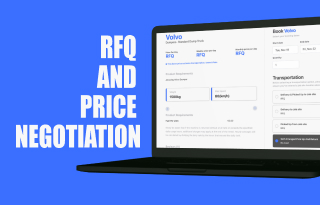
A Case Study on RFQ and Price Negotiation by Roobykon
From unpredictable configurations to competitive bargaining, we faced and conquered the challenges of RFQ functionality for marketplaces. Here’s how we did it.
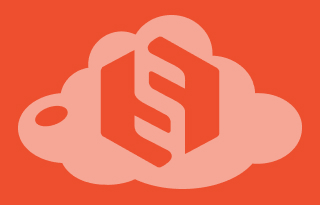
Navigating Hosting for Your Sharetribe Marketplace
When running a Sharetribe marketplace, hosting decisions can make or break your platform’s performance and user satisfaction. In this article, you’ll explore various hosting solutions, tips for scaling your marketplace, and best practices for ensuring high availability and speed.
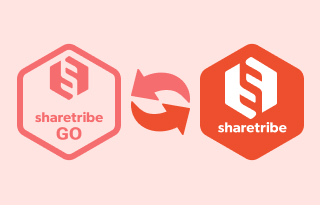
How to Migrate your Marketplace from Sharetribe Go to Sharetribe
A comprehensive roadmap for marketplace owners navigating the technical transition from Sharetribe Go to the New Sharetribe, ensuring seamless platform migration with minimal operational disruption.






